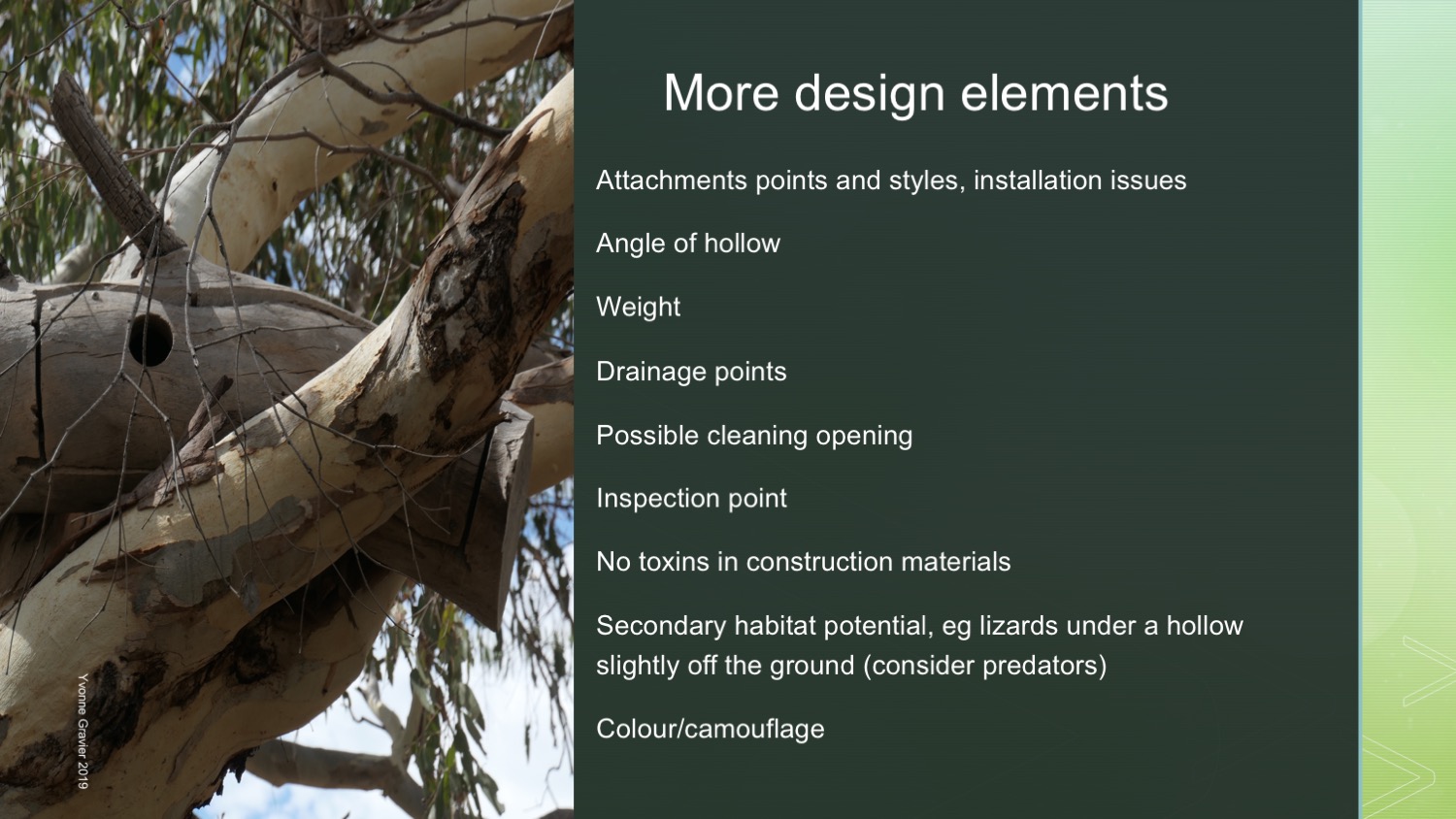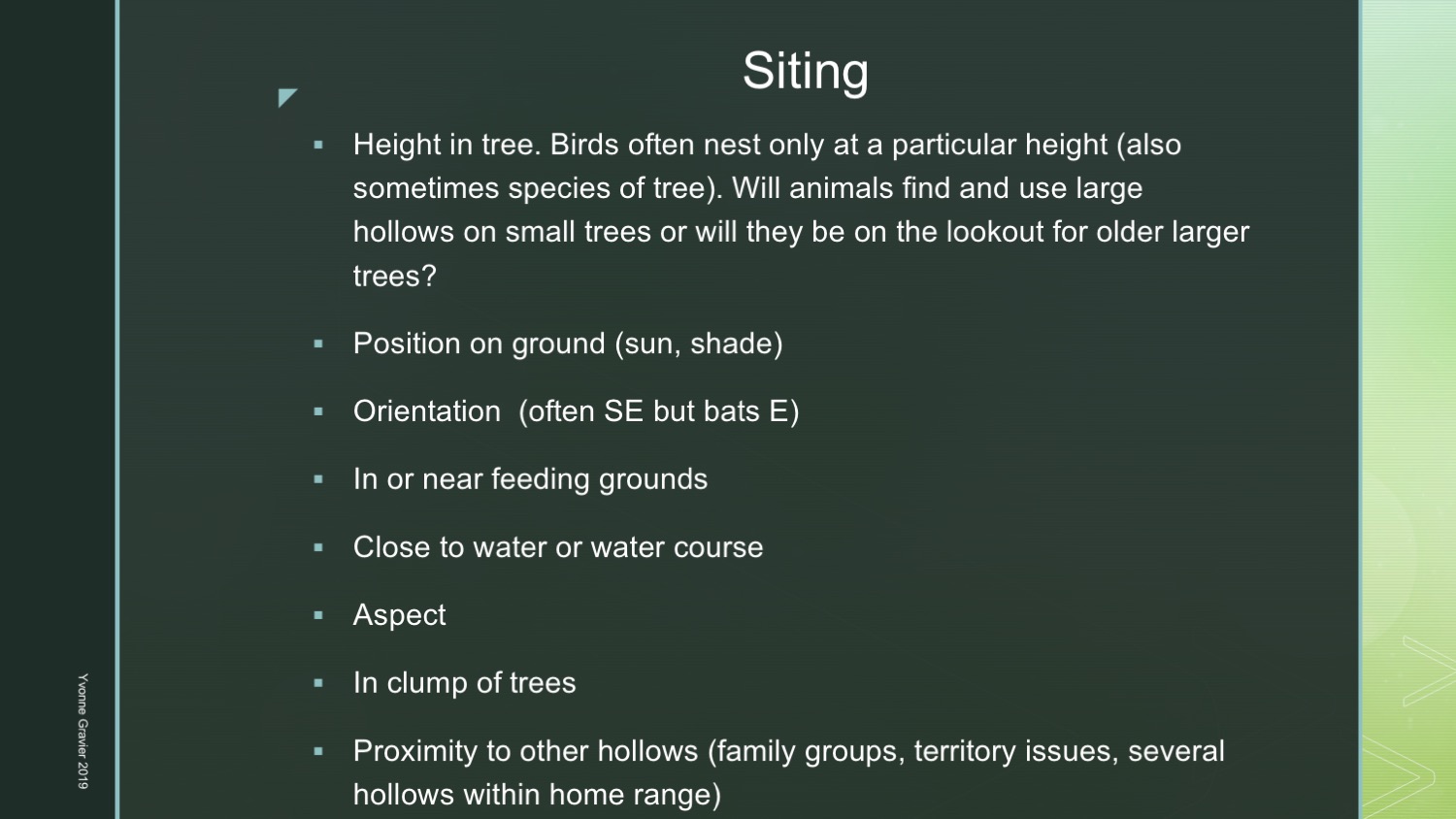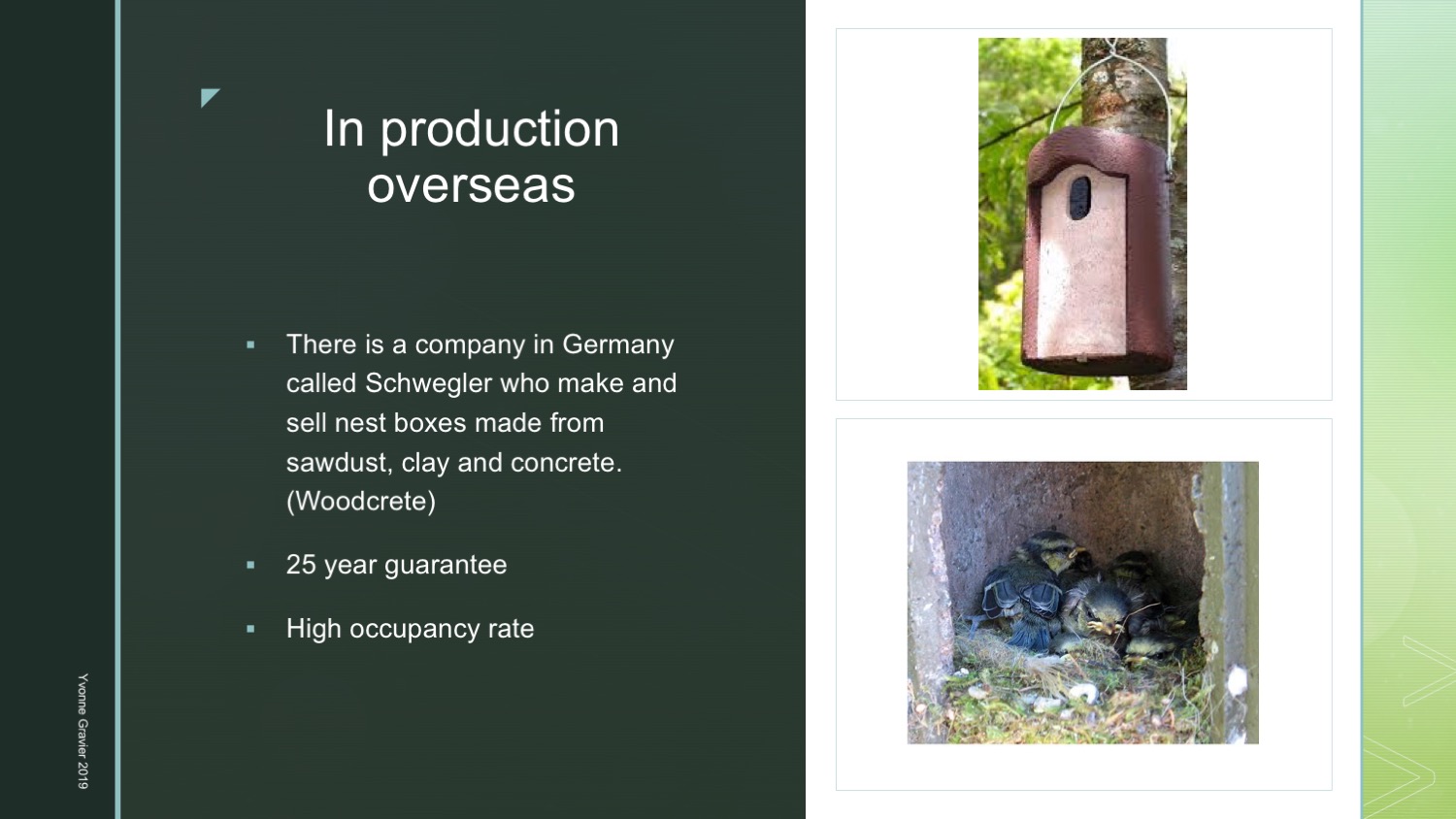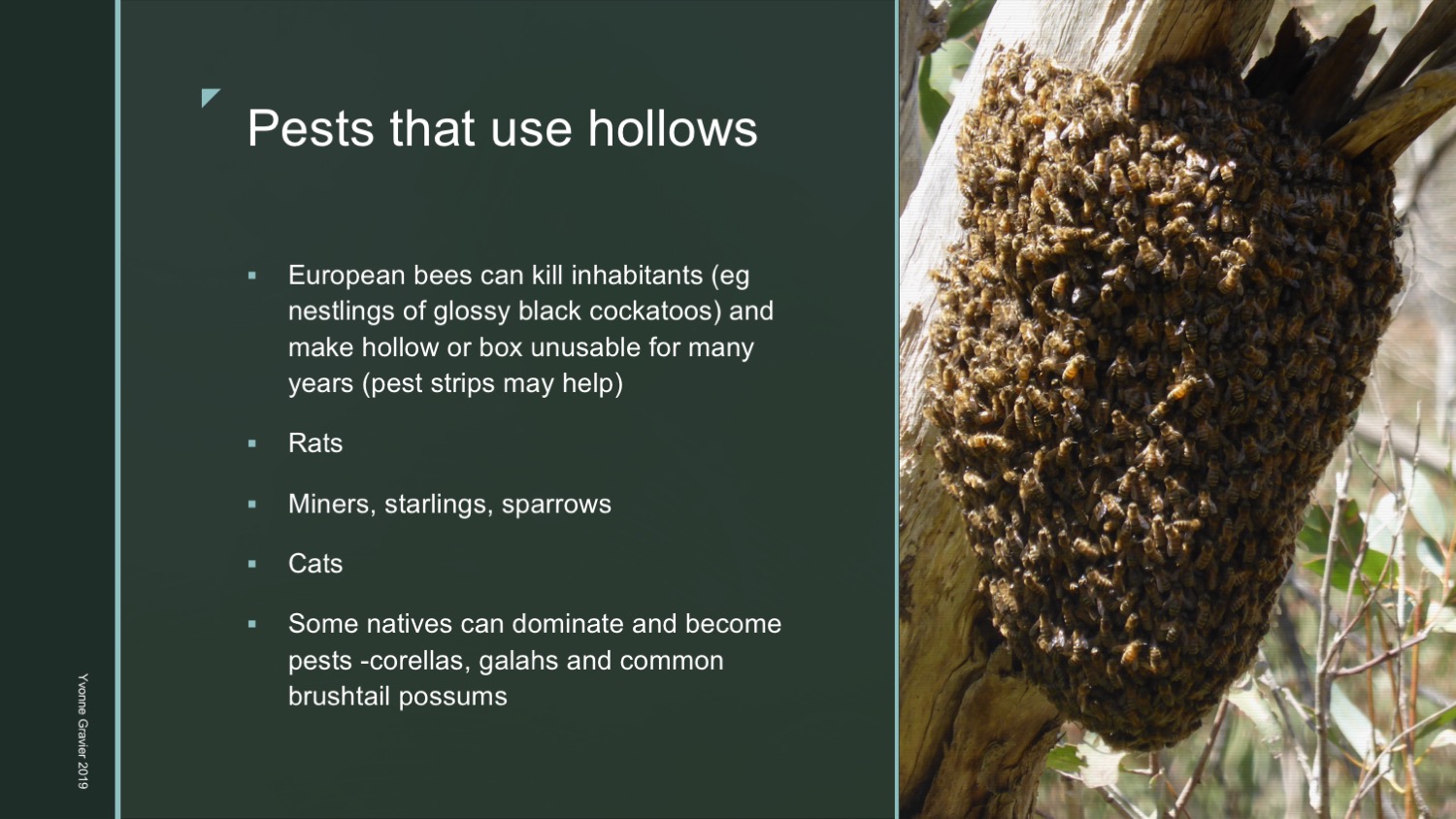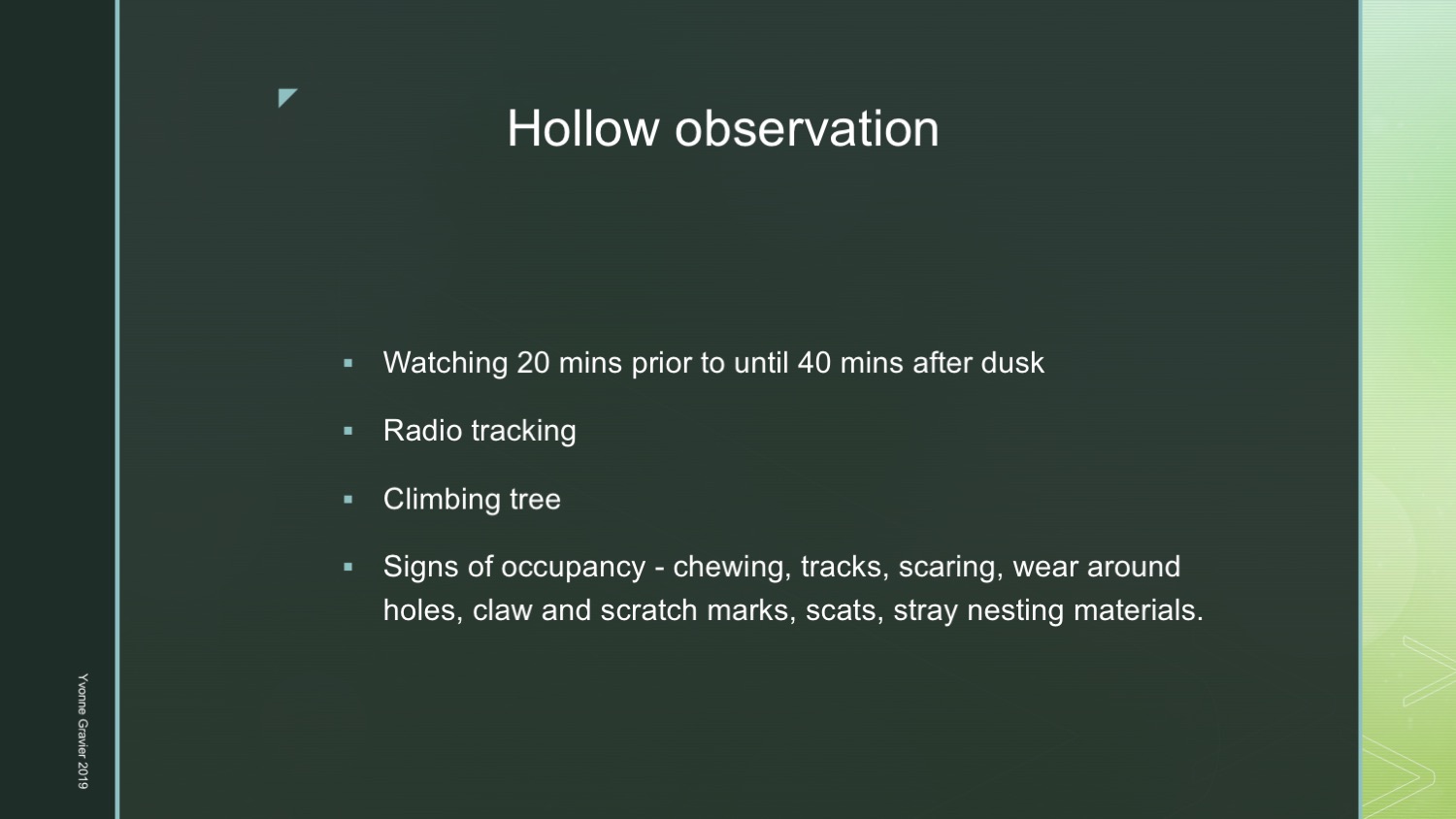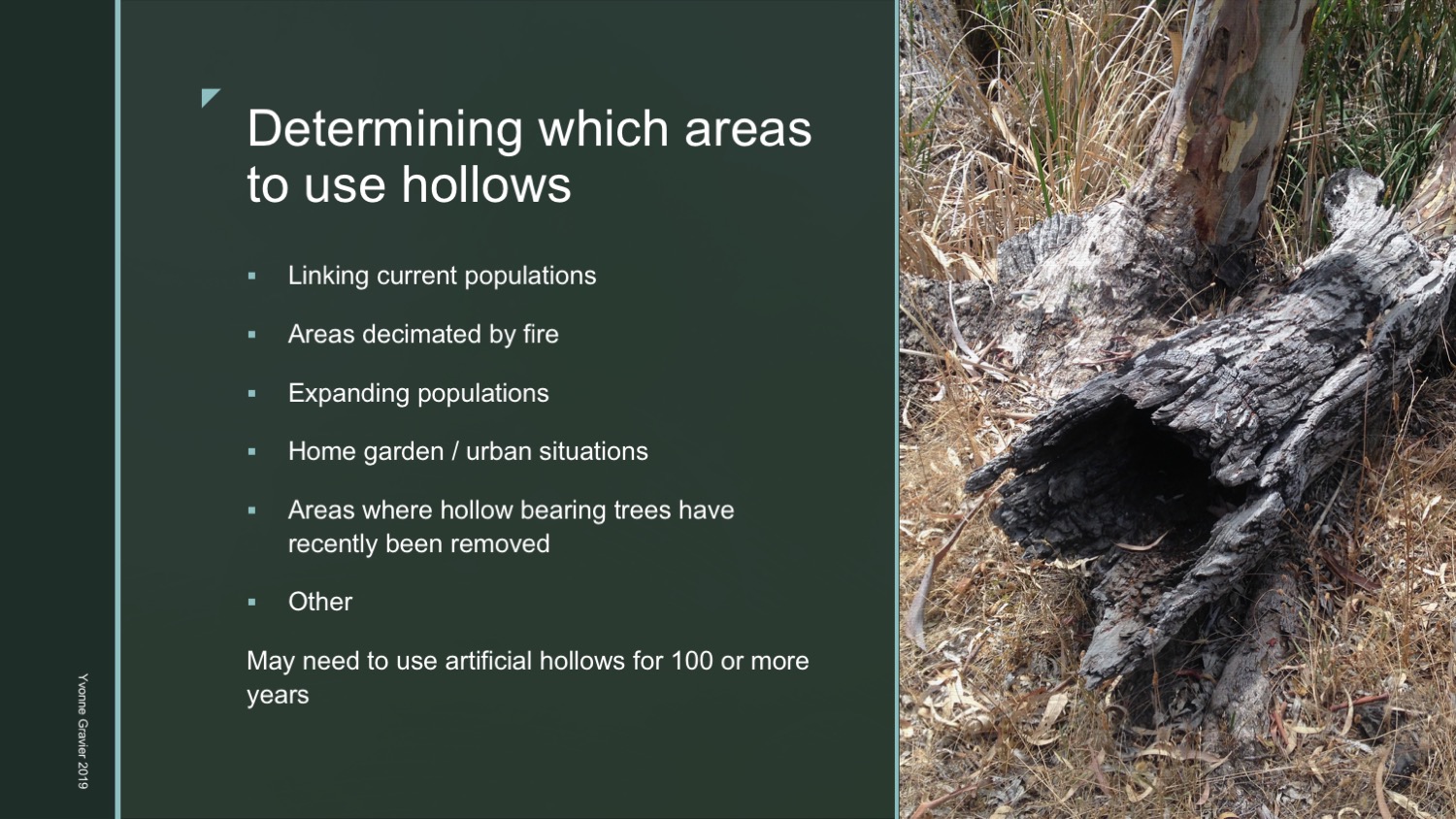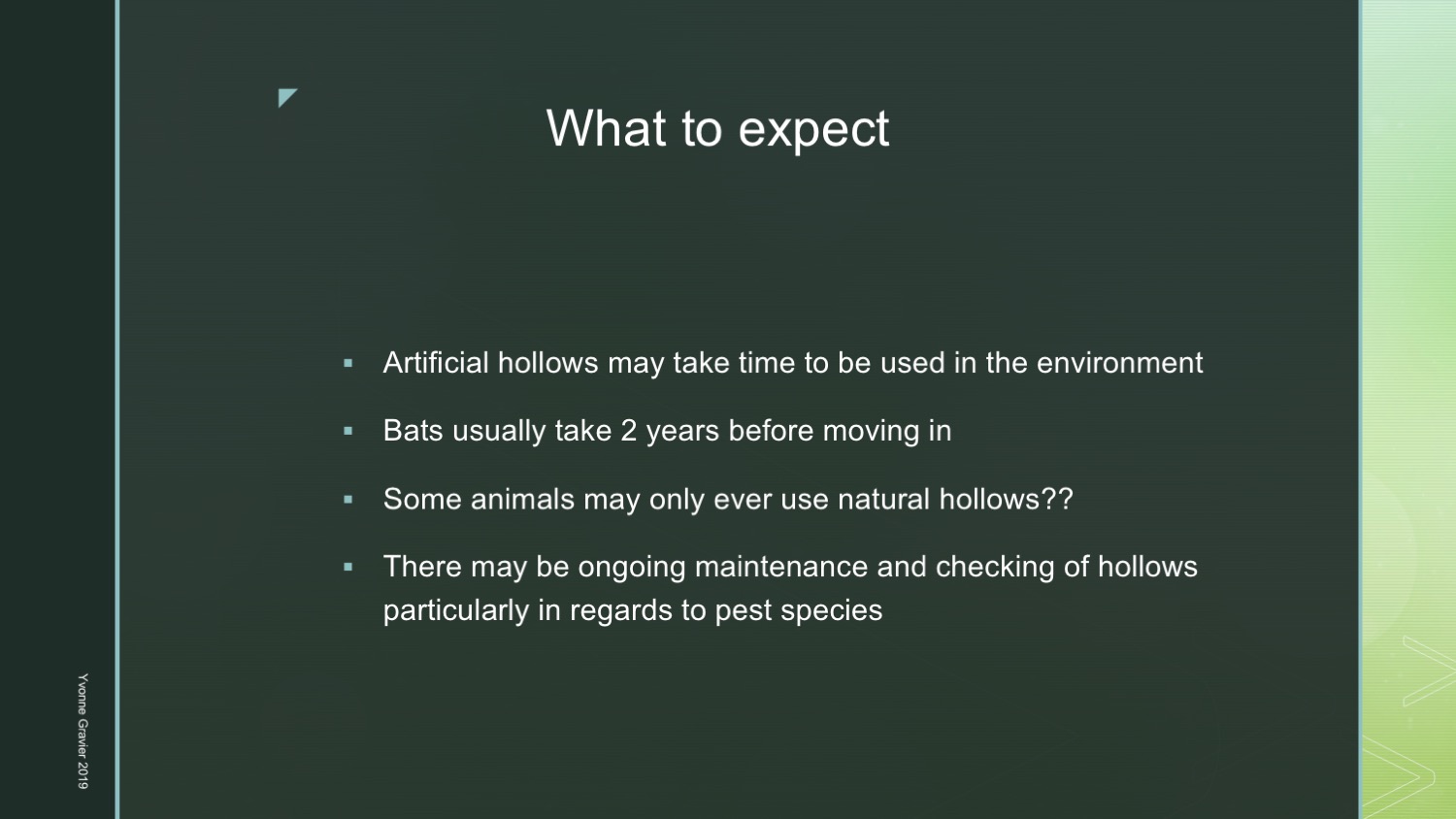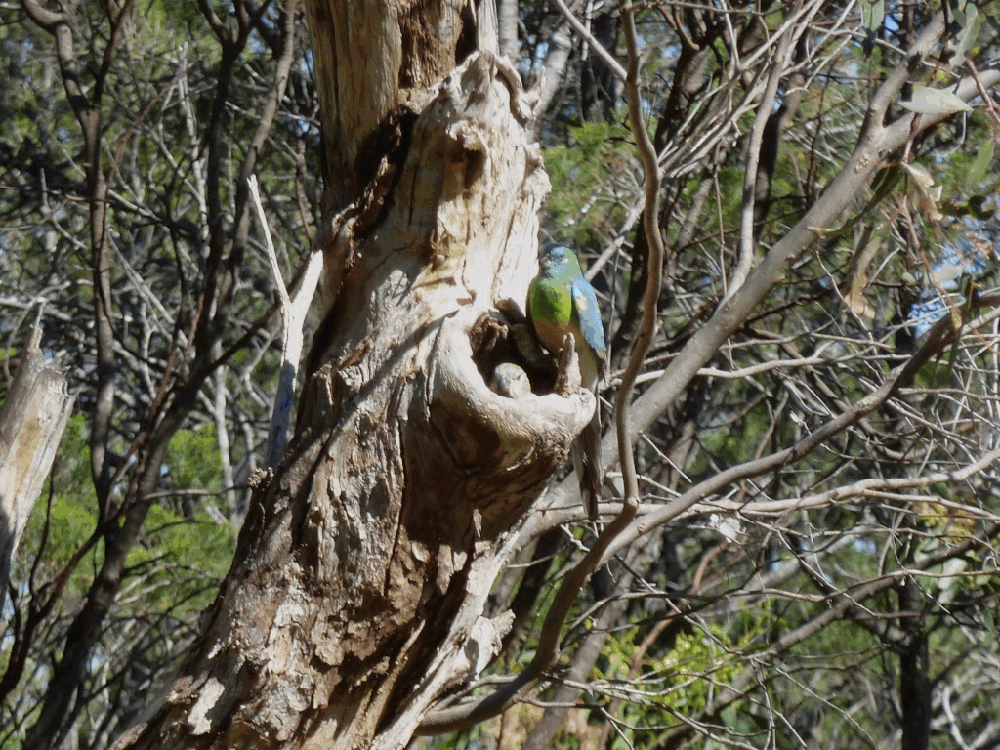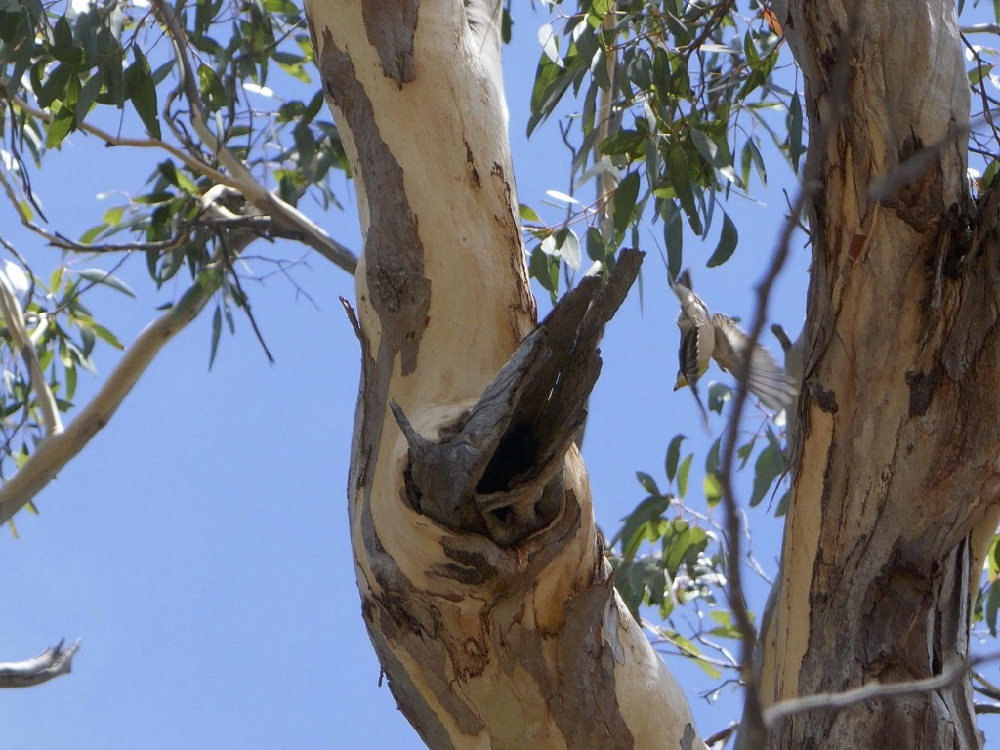Hollows
Tree hollows are cavities that are formed in trees often over a long period of time. They play a very important role, providing habitat for birds, bats and possums. Hollows may be present in living or dead trees and it’s important to protect these very valuable trees in the landscape even after they have died. The habitat value of trees increases with age. In fact most trees won’t produce hollows until they are quite old often more than 100 years.
Hollows can be formed after branches and limbs have fallen off, after fires, or from insect, termite or fungal attack. They come in all shapes and sizes. Small hollows may be suitable for tiny birds such as pardalotes, or insectivorous bats that live in hollow crevices. Larger hollows may become the homes of parrots, kookaburras, owls or possums. Hollows may be used just for roosting or for nesting and rearing young. Some birds and animals are unable to live without hollows and will disappear completely from an area without them. These are called ‘hollow dependent species.’
When no hollows are available people could replace them by making artificial hollows or evennesting boxes of various sizes to encourage animals to stay and breed.
Environmentalists are working on other ways of making hollows. One method is cutting branches at angles that encourage dampness and fungal attack to eat out the centre out of the branches creating a cavity. Also carefully opening up and cutting into fallen timber to make unnatural cavities is another method. Composite hollows made from mud and other materials could form well insulated hollows.Planting new ‘recruitment’ trees, species that are likely to one day become ‘habitat’ trees is also vital if we want to preserve our biodiversity. Even more importantly retaining all standing trees both living and dead is vital.
Last Modified February 27th 2020

























